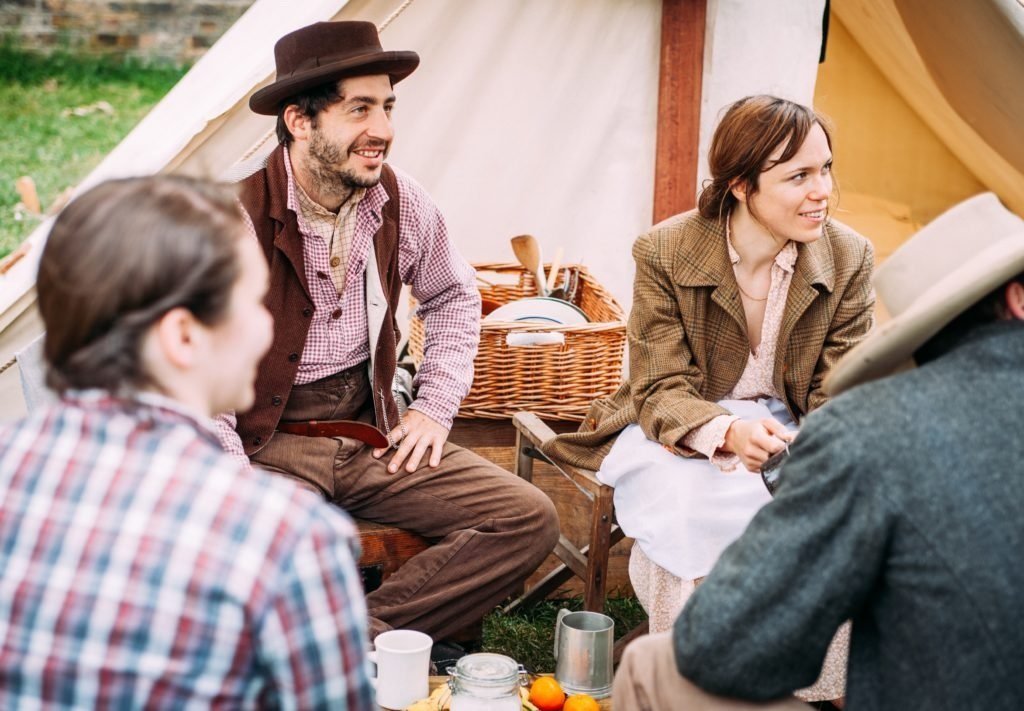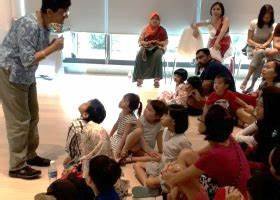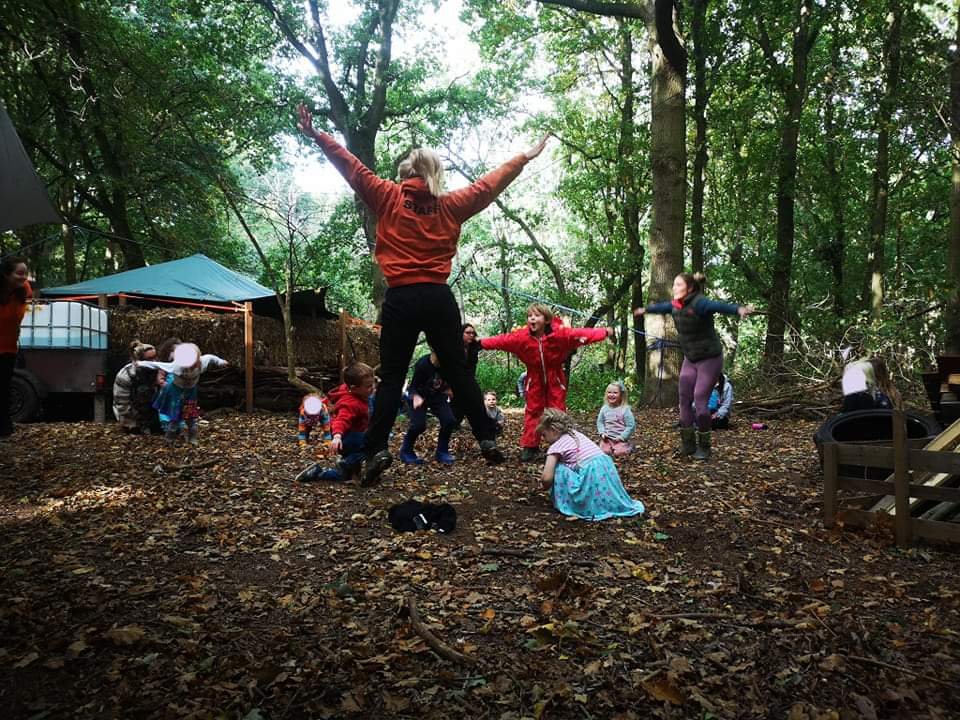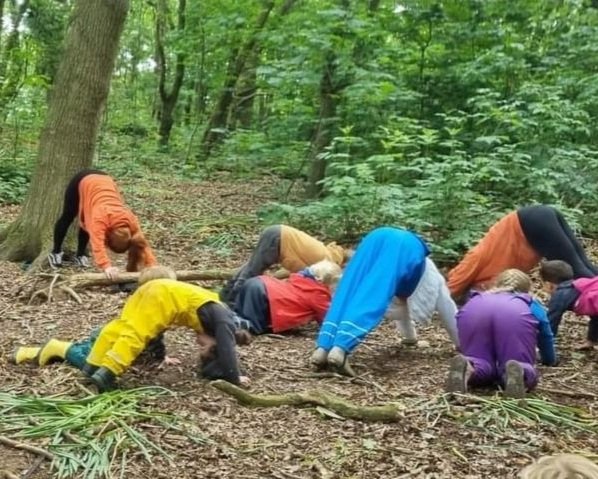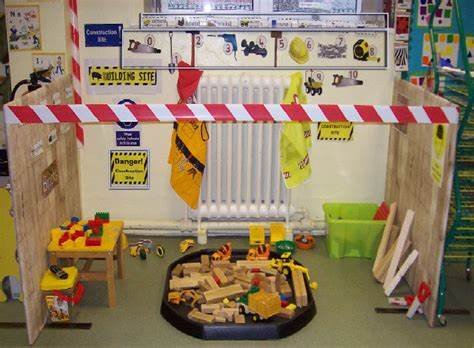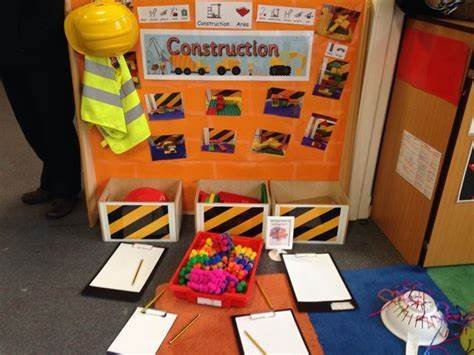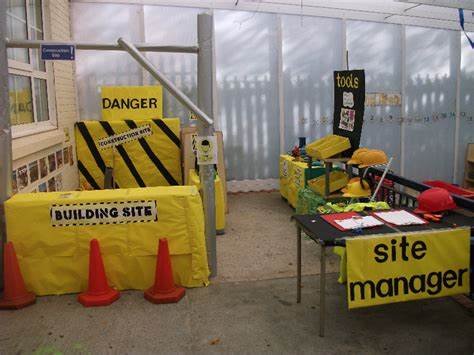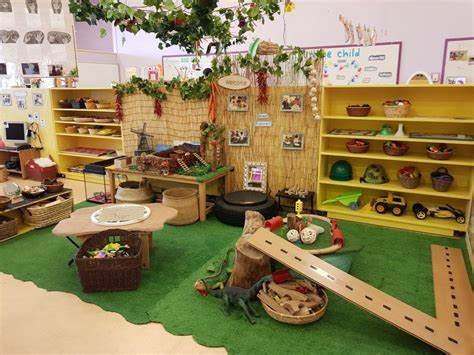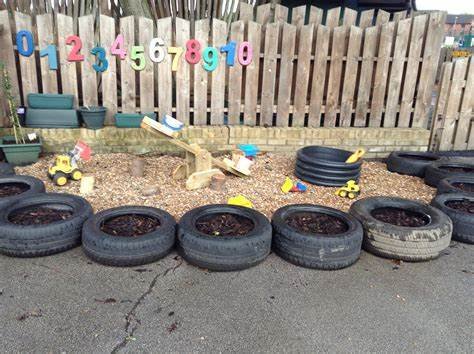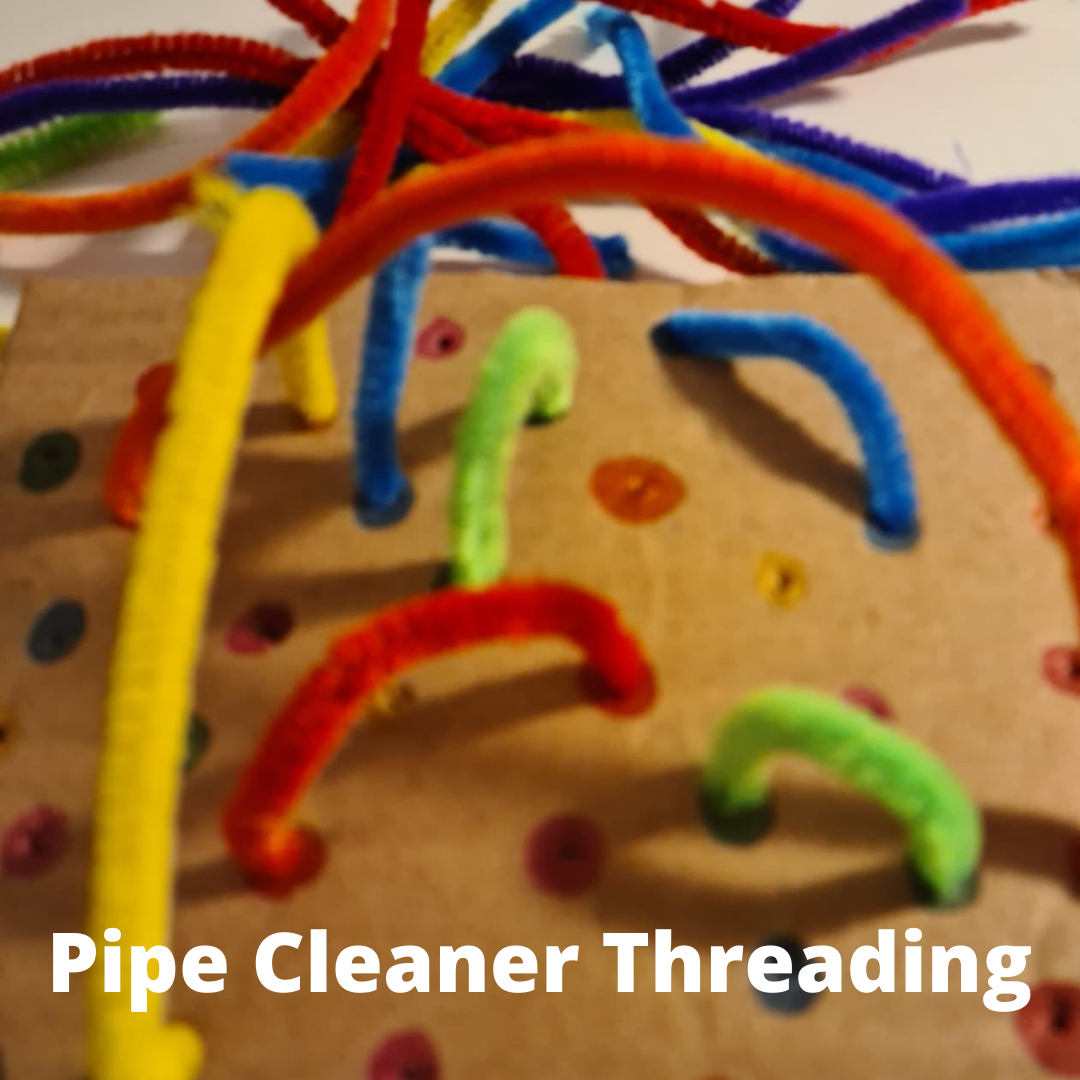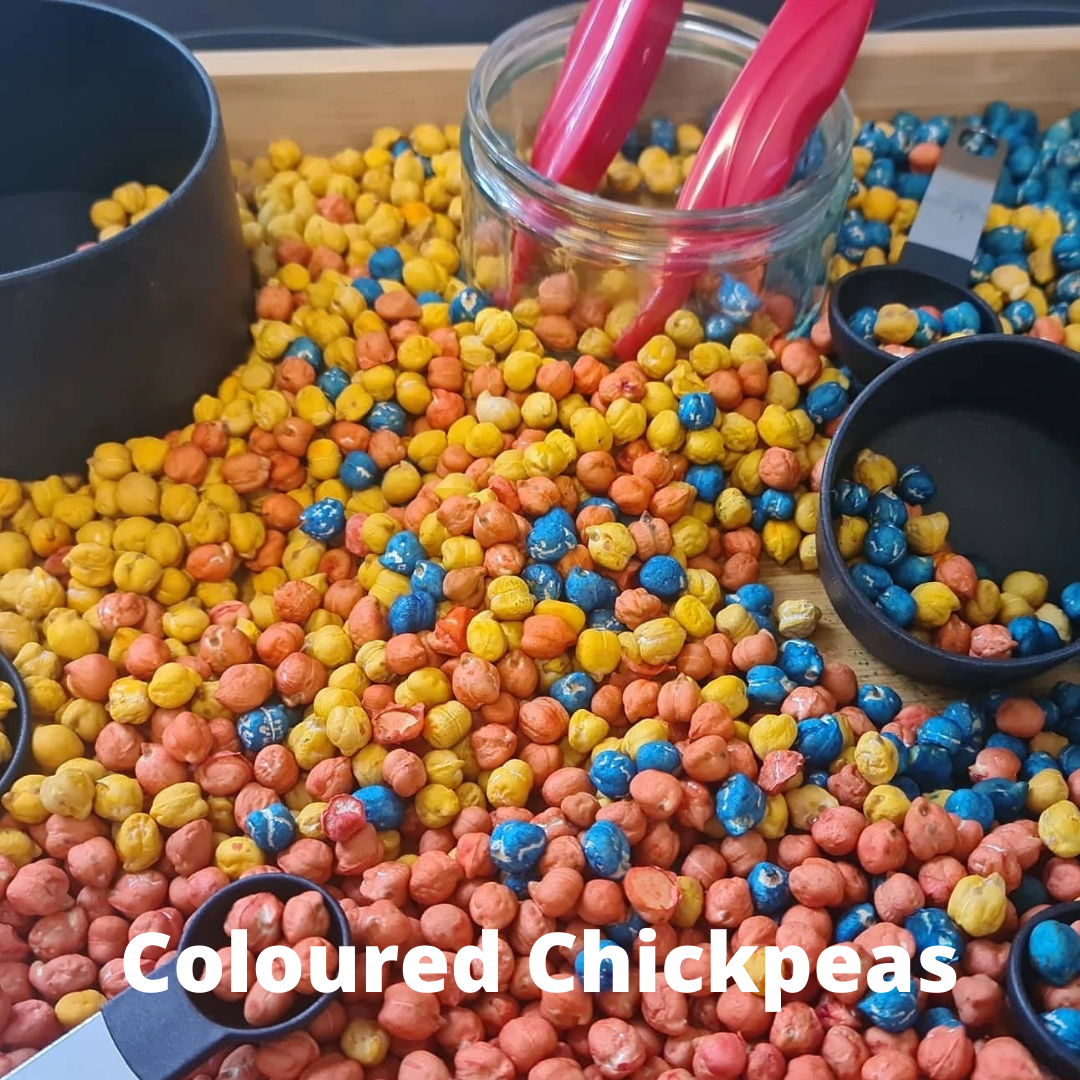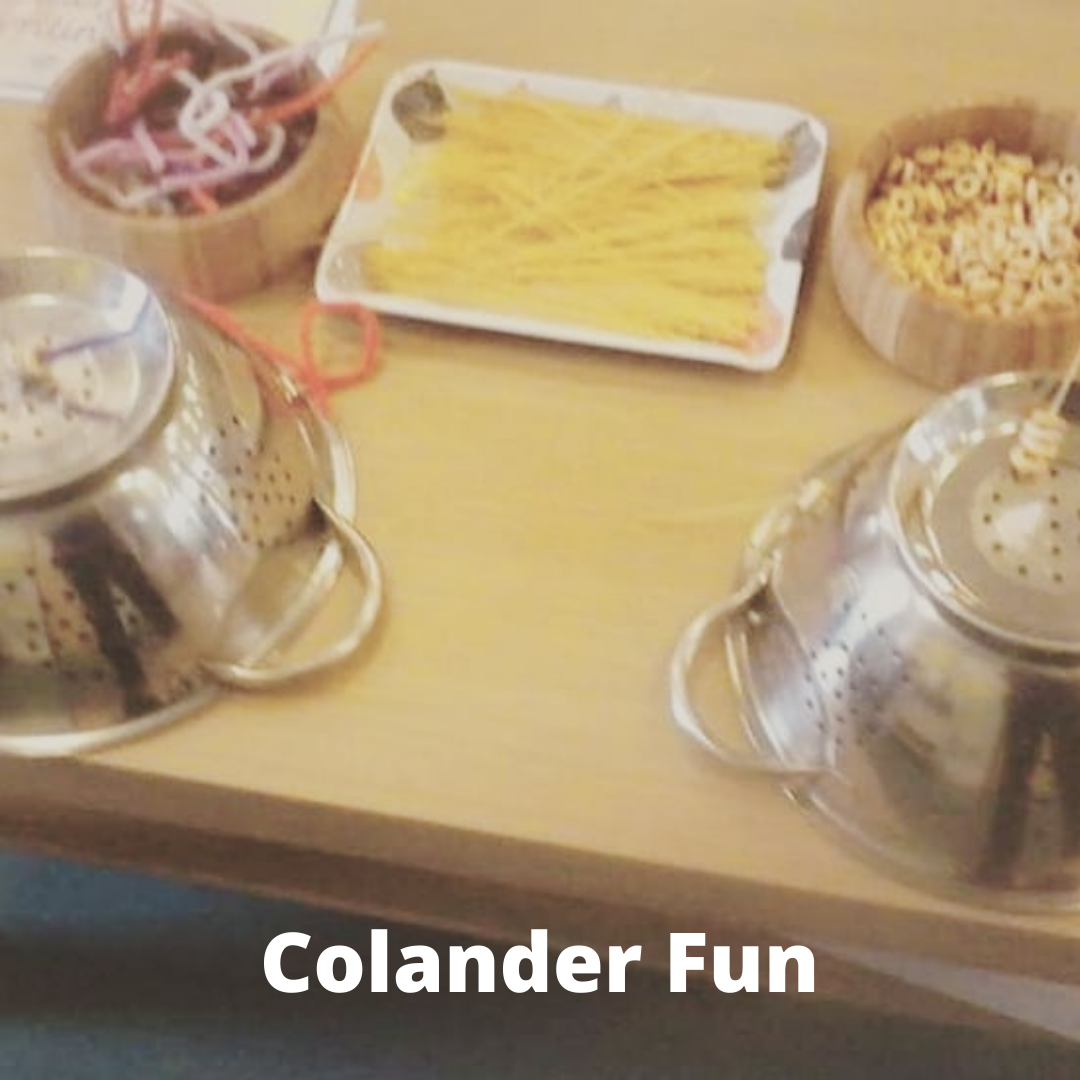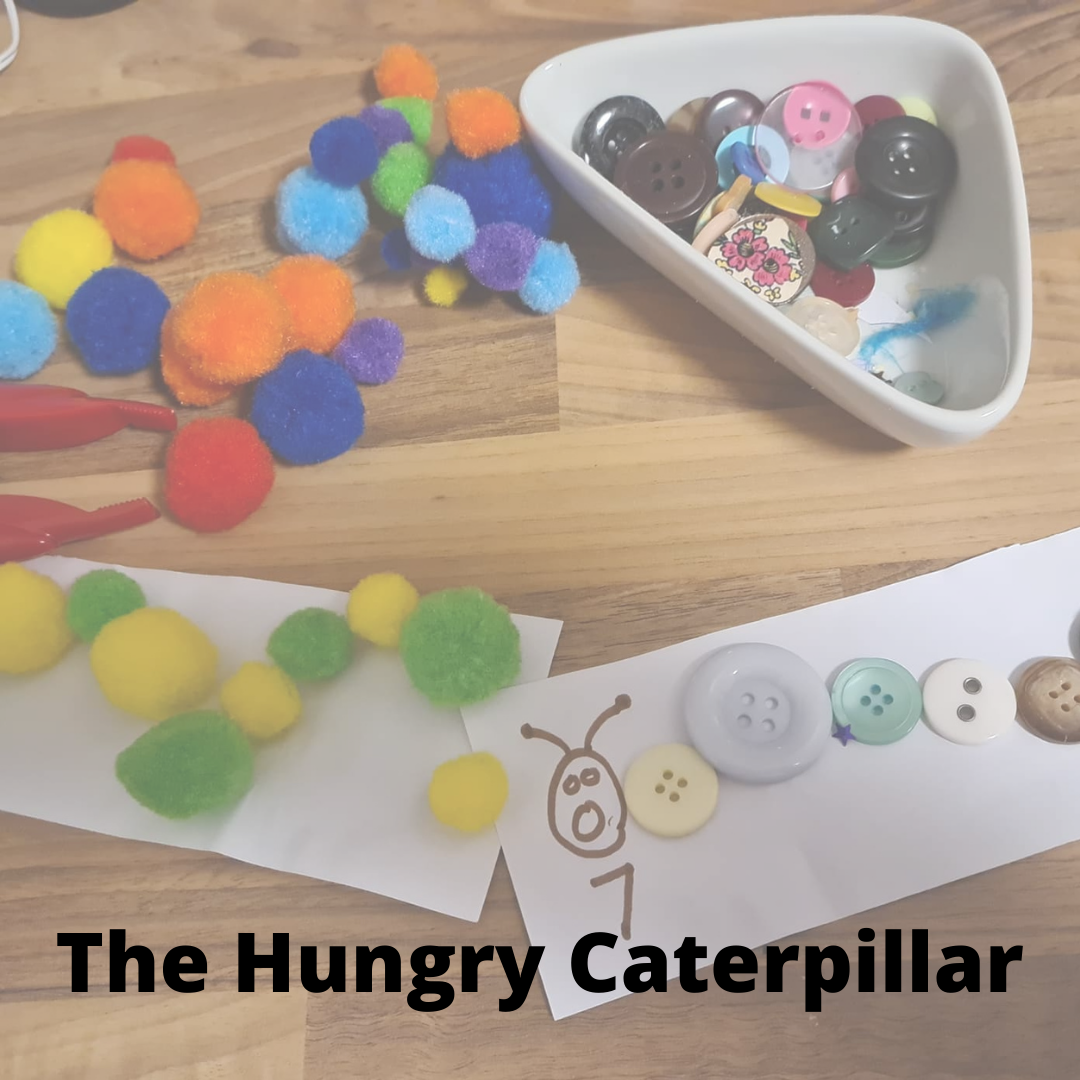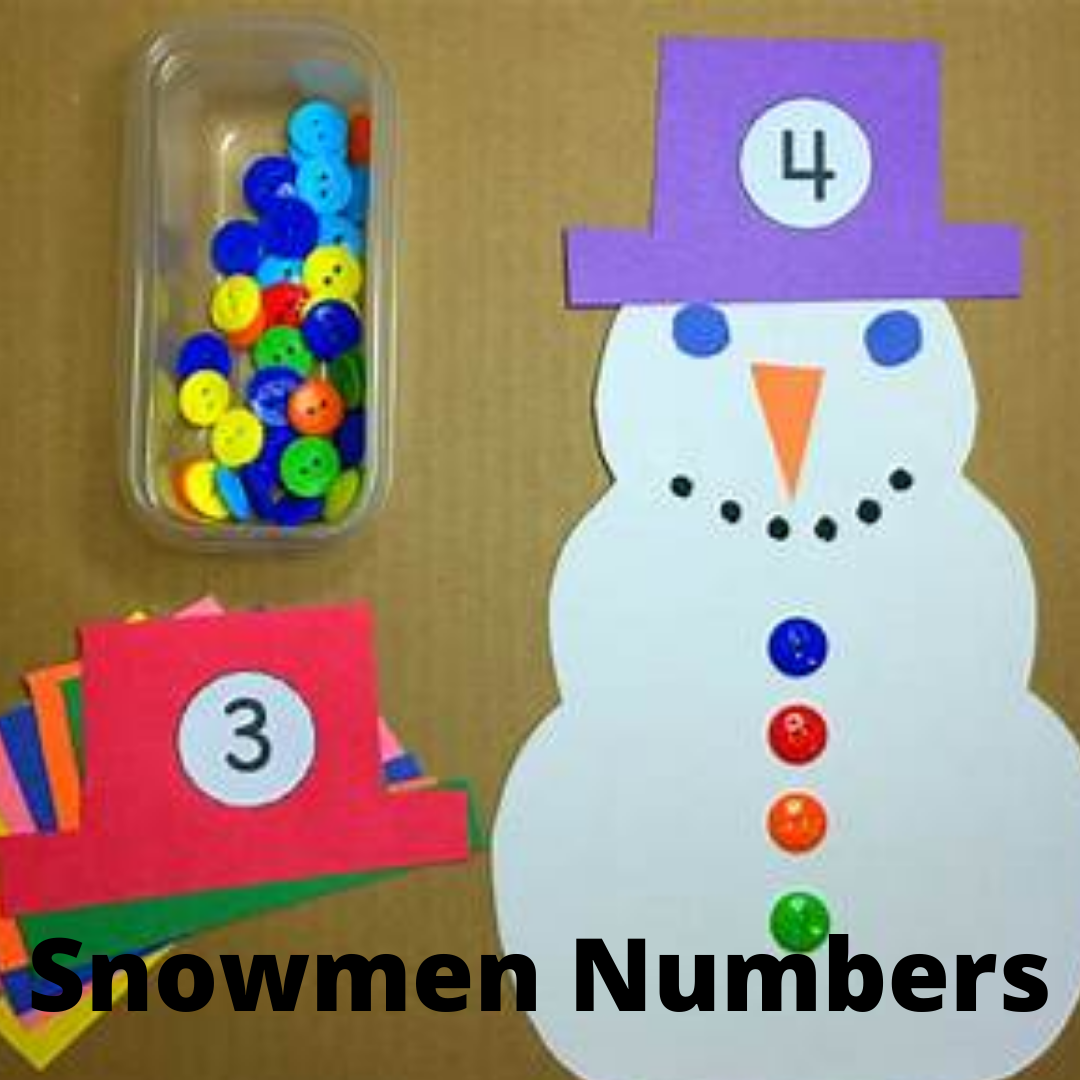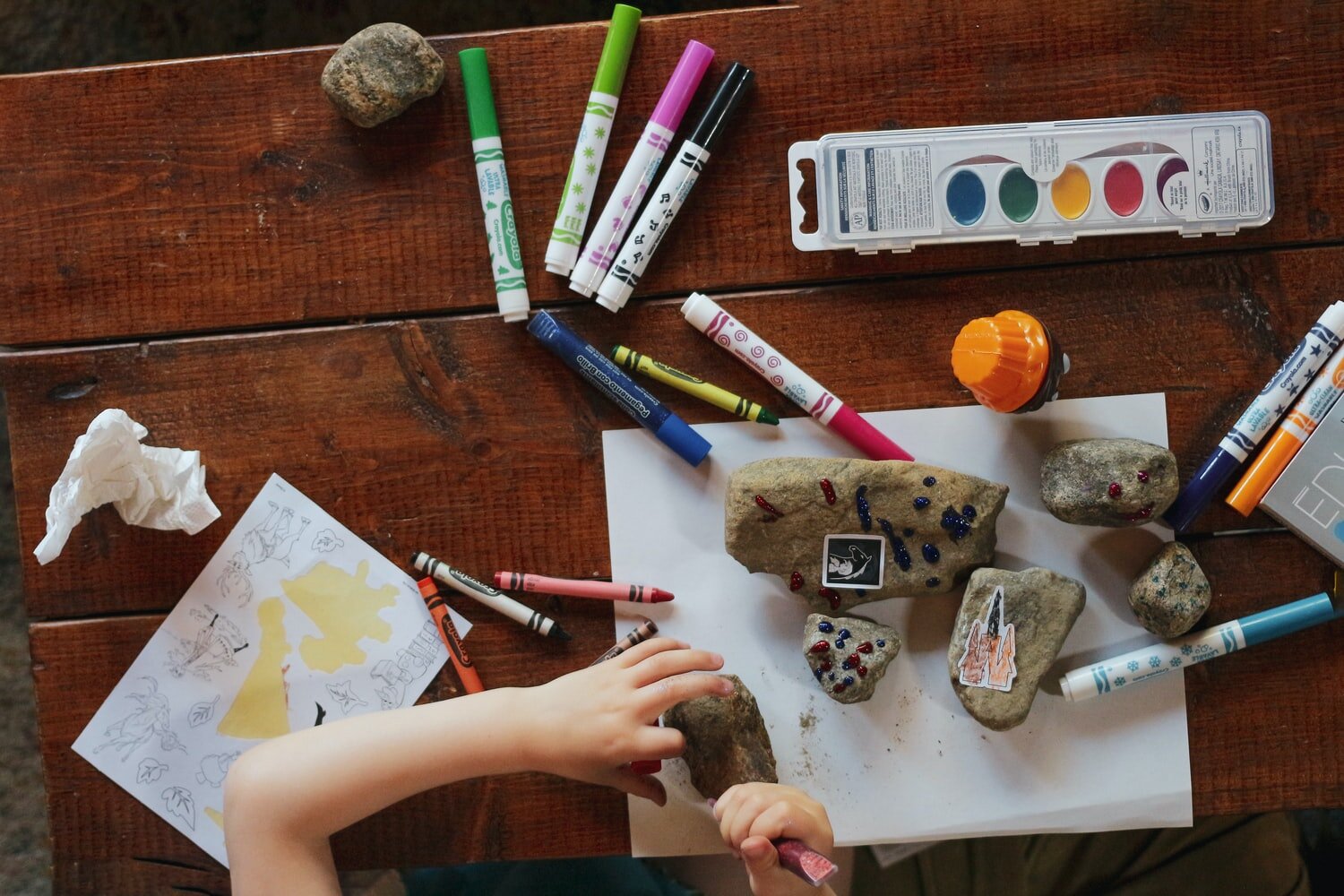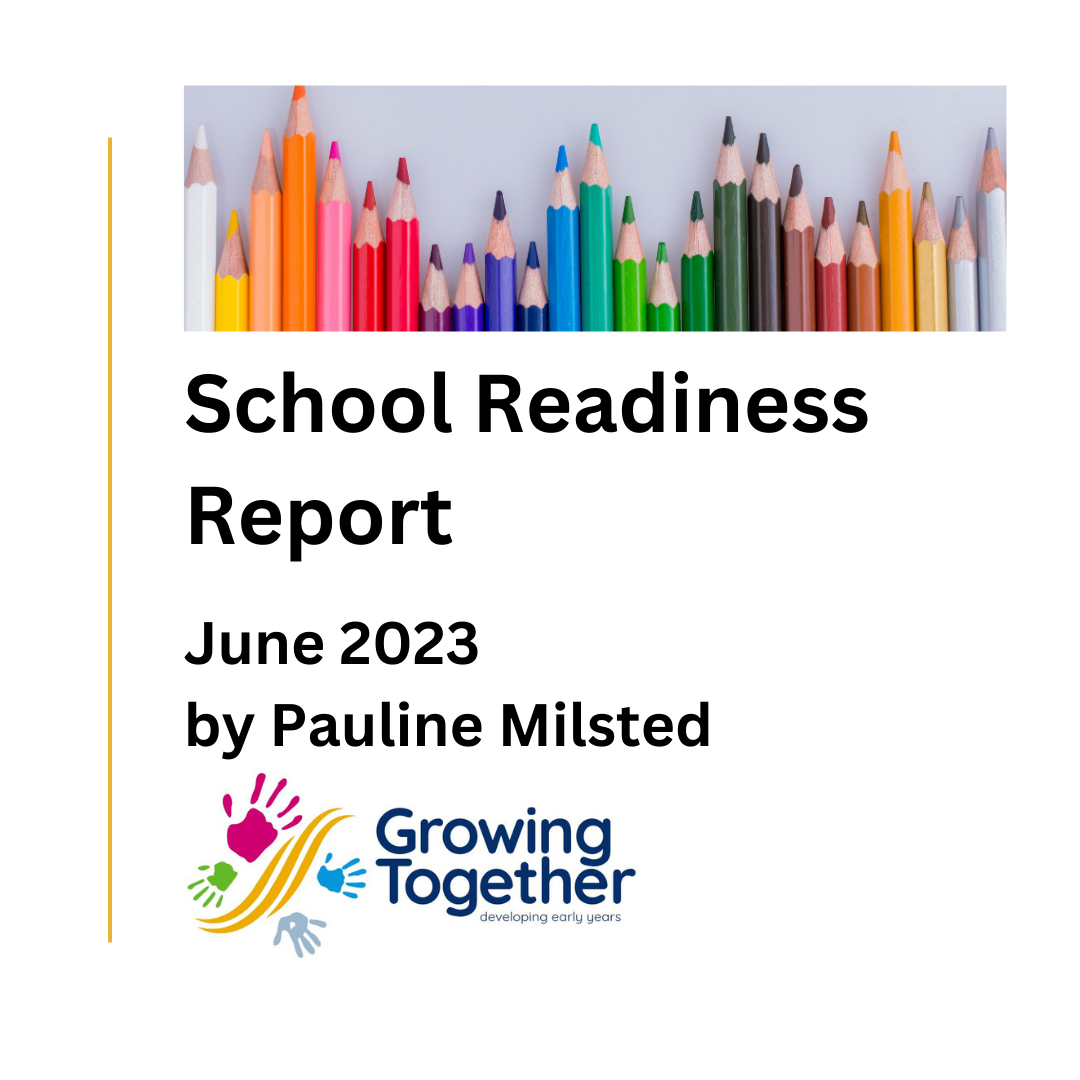How to Have a Fabulous National Story Telling Week on a Budget!
National Storytelling Week (NSTW) is a firm favourite of myself as an early years consultant. I am a firm believer that we all have a story inside us to tell, we are born storytellers. And this week gives us the opportunity to share stories, to build narratives and even better we can do it on a budget without spending hundreds of pounds!
Here are your 5 tips for doing NSTW on a budget:
1. Involve your community!
We will all have members of our teams, families, or local people in our community that have stories to tell. Whether It is a traditional or cultural story passed down from generation to generation Ask people in to tell a story or research stories that families share that they grew up with. Also, are day to day lives are made up of stories, from telling a story about going to the shops or a holiday that we have recently had. This is also a great time to look at the stories of different occupations, for example, the day in the life of a builder.
(Images left to right: Fresh Expressions 2023, Storytellers Singapore, 100 Stories Before School 2015)
2. Make your own puppets!
Practise scissor skills cutting out your favourite characters from magazines and catalogues. Then turn them into your own stick puppets for storytelling, by sticking them onto lollypop sticks. Or design on cardboard and carefully cut out your very own characters to be the centre of your story, perhaps a dragon, a princess or a monster! Or make some of simple finger felt finger puppets developing fine motor skills and sewing around the edge.
3. Model storytelling in play
As children play and add a narrative to their play they are naturally telling stories. Play alongside the children, modelling vocabulary structure and natural storytelling. Whether it is when you are playing with the small world toys, or making up stories in the garden about running away from a big scary monster. Children need to see us as storytellers as well.
4. Create story maps
Story mapping is a great way of involving children story telling and sequencing. You can use this to tell a story children are familiar with or use it as a tool to visually map out the story you are telling. It is great for highlighting the details of a story beyond beginning, middle and end as you draw pictures for the main points of the story. This is also a technique that children can then use to retell their own stories before they are ready to write.
(Aberford C of E Primary, 2017)
5. Yoga Storytelling
I was recently at an outdoor setting (Born to Woodland in Rayleigh Essex) and was very inspired by their yoga story time. They have a story of the month, e.g. the very hungry caterpillar and they use different yoga moves to support children's wellbeing and physical development. I loved this idea and is something you can easily makeup or do in your setting. There are also a variety of books and online resources available to help you with this.
(Photo Credits: The wonderful staff and children at Born to Woodland, Rayleigh Essex. Joining in their yoga stories! Born to Woodland is a setting that caters for children between the ages of 3 to 11 years old).
Supporting Storytelling Through Block Play in the Early Years
Children will go through different stages as they begin to use props to make up stories and add dialogue to their play…
For our final blog post in our block play series, we are going to look at how block play can support children to develop that inner storyteller. Whether that be through incorporating small-world play and props role-playing being construction workers. There is lots of opportunities and ways that we can support children to develop their narrative, communication and language skills, and personal social and emotional skills as they work together to add a storyline to their play.
What are the stages of story telling in play?
Children will go through different stages as they begin to use props to make up stories and add dialogue to their play. For example, children may begin to add voice sounds as the run a car across the floor going “brrm brrm”. This is the very early stage of children adding dialogue to represent their understanding and experiences. We then act out our familiar experiences using available props, for example, we may pick up the hammer and begin to bang the hammer and represent what they have observed others doing. As children get older, they begin to play alongside other children in their play, so for example, we all might be playing tea shops making teas and coffees. We are engaged in the same activity, but we are not necessarily reliant on each other for our play or interacting with one another. Children them move into the stage of collaborative play where they are working together to develop their storyline and direction of play.
The reason I share the stages of play is that it is important to reflect on where your individual children are in their journey when you are supporting storytelling through play. For example, if you have a child who is many solitary in their play but is beginning to add noises and sounds to their play. You maybe supporting them by modelling joining in and playing alongside others. Or using communication and language to invite them in and add narrative to a play and to show them perhaps (not an indefinite way as play is open ended) but suggestions that could spark their interest or enhance their play. For example, you build a bridge using the construction blocks. You test to see if it is high enough to fit the toy car underneath. You then might add some “brrm brrm” or “beep beep” noises as you move the cars around.
Ways to support storytelling in block play?
There are many ways that we can support story telling in block play, through providing children with a range of rich and wonderful experiences and resources. Below are some ideas to support children:
Have a range of fiction and non-fiction books around building and builder’s sites. This will give children knowledge and understanding that they can add into their story telling.
Have a local builder come in and talk about their job or visit a local builder’s site to see what happens.
Model to the children play and developing stories around available resources. For example, children might need to see an adult model how we use a spirit leveller to know how we use it.
Add in small-world props and resources based on children’s interests – e.g. cars, toy people, animals, dinosaurs and so on.
Provide story sacks or baskets with available resources to retell those familiar stories. For example, the 3 Billy Goats Gruff Book and puppets; with the building blocks. This may inspire the children to build their own bridge for the big bad troll to be hiding under and to retell the story. This can either be left as a provocation to see what the children do with it or it can be an adult directed activity where you work together to build the bridge and scaffold the children as they work and retell the story altogether.
Add dressing up items such as hard hats and high visibility jackets, to encourage them to role-play being builders.
Have real resources such as tape measures, rulers, spirit levellers and so on to support children to act out those experiences using the props around them.
Encourage children to share with others and talk about what they have built and describe it.
Join us for our next running of our webinar, ‘The Potential of Block Play in the Early Years’ on the 1st September 2022 at 7:30 pm
Guest Blog: Persona Dolls and Their Impact
One child ran to get a tissue to kindly wipe Ollie's tears and nose, other children gently rubbed his back and gave him a hug, another went to get him a drink so poor Ollie had his first bath that evening too!
Written by Fiona Courtland from Gables House Nursery
(Photo Credit DECSY)
I first came across Persona Dolls in February 2020 as I was browsing through the internet looking for ideas to promote inclusive practice in my early years setting. Persona dolls were founded by a lady named Babette Brown in 2000 who's mission was to promote diversity and challenge discrimination on the grounds of race, gender, class and ability. Referenced from (https://personadolluk).
Intrigued after watching a promotional video, I purchased the training resources and my first Persona doll whom we named Ollie. He arrived during the first lockdown which was actually perfect for us because we had one particular little boy who had very abruptly transitioned from his existing nursery to ours due to a Covid closure. As a result, he was really shell shocked at being moved from a nursery he loved one day, to our nursery the next, by a very fractious and worn out mummy who was working full time for the NHS.
As a team of staff, we had a discussion around intention of use for the doll which we believed might resonate with this child. We named our doll Ollie and gave him a similar identity to child x, a home, a family unit the same. He had similar likes, interests and family circumstances which we thought would easily form a connection to the child we had in mind. On first introduction, I entered the room holding Ollie whist all the children were busy playing and placed myself strategically next to child x. I said nothing, I just waited and after a few minutes proceeded to place my ear up to Ollie's mouth in order to start my imaginary conversation. I responded to Ollie with words of reassurance and my eyes remained fixed on the doll giving him full attention. It took less than two minutes for children's curiosity to be roused to the point where they stopped what they were doing to investigate further.
At first there was a general air of disbelief and suspicion about the credibility of my conversation. However my face remained serious as I continued to give Ollie and only Ollie my undivided attention. Soon the children were following my lips and my actions, fully attentive and engaged in listening to the responses Ollie gave to me through my feedback to them. At that point I knew I could sensitively open up a discussion around feelings attached to transition using Ollie as an example and my prop. As a result I am pleased to say that child x shared all his fears and anxieties relating to his recent move with myself and his new friends during that conversation.
“The impact was instant and quite remarkable.”
The impact was instant and quite remarkable. One child ran to get a tissue to kindly wipe Ollie's tears and nose, other children gently rubbed his back and gave him a hug, another went to get him a drink so poor Ollie had his first bath that evening too! Most importantly, the children showed empathy and kindness towards both Ollie and child x as they developed a new understanding of what it feels like to not know anybody and feel different. Child x showed a sense of relief. He wasn't the only one who was going through a tough time and we could see that he felt better for sharing his thoughts and feelings with us. We were quickly from that point able to both reassure him and also put together next steps in order to continue helping child x to process the sudden changes in his life and the emotions attached to family life being a little strained. He settled so quickly after that. A few months later child x had to get his first pair of glasses. Guess who also happened to need cool and trendy glasses on the very same week? Yes you guessed it..... Ollie!
Since the purchase of Ollie, we went on to buy one more Persona doll named Ekam. Ekam also enabled staff members to open up a whole host of discussions, some relating to equality and diversity, some related to other topics for example protecting our environment. One staff member took Ekam to the beach and collected litter, surrounded herself and the doll with the litter and took a photograph of them with sad faces. The next day a group discussion was opened up as children were asked to think about why she and Ekam might have been sad. The Impact of learning from this discussion set a course for further topics related through planning next steps.
Like all settings we sometimes have challenging behaviour with children who struggle to self regulate emotions. This might include them biting, spitting, being unable to share and take turns etc. The dolls provide a valuable approach to handling all of these issues professionally, sensitively and effectively for the good of each child's unique set of circumstances. They work and they work well and through subtle, indirect teaching we can help children to understand, think critically and make sense of the world around them. The dolls allow children to voice their opinions, give opportunities for the children to know that they are being heard and enable them to understand the importance of allowing different views to be valued.
Every week we find new ways of using these dolls and the children continue to learn so much from us through their use.
Focus on Dough Disco
As part of our finger gym blog series, I wanted to talk about the wonderful benefits of dough disco to children’s learning and development. In particular development of those all-important physical skills…
As part of our finger gym blog series, I wanted to talk about the wonderful benefits of dough disco to children’s learning and development. In particular development of those all-important physical skills, including both gross and fine motor that we develop in the early years. Finger gym is something that I am so passionate about making a difference to children’s development and learning, but also it is fun, creative, and engaging for young children. I was first exposed to finger gym several years ago when I went to the childcare expo and saw a demonstration by funky feet. If you don’t know who funky feet are click here, they will instantly make you fall in love with dough disco.
The songs are catchy, the movements are challenging and fun and most of all it is grounded in a good understanding of how children learn, grow, and develop. With links to how it supports development and growth and the reasons behind why dough disco is designed the way it is. A clear intention, before we even began to use the words intent, implementation, and impact in every conversation we had regarding the early year’s curriculum.
So, what are considered some of the numerous benefits of dough disco? Below are just a few:
· Supports the development of children’s gross motor skills such as shoulder pivots, elbow pivots and wrist pivots that are all essential for early writing.
· Helps to develop children fine motor skills (small movements)
· Helps to develop the muscles in children’s hands.
· Supports children’s communication and language development.
· Promotes movements that cross the midlines in the body, which help promote brain activity and connection between ideas.
I will never forget the time I was doing finger gym in a nursery and became known by the local Occupational Therapist (OT) as the dough disco lady for many years to come. Who took the wonderfulness of dough disco back to the office with her and into numerous early years settings. So, if you haven’t tried out dough disco yet, what are you waiting for?
Check out our new playdough disco action cards here…why not encourage the children to sequence their own movements and actions along to their favourite songs. A great activity for promoting communication and language skills, personal social and emotional development, physical development and expressive arts and design.
The Intent Behind Finger Gym
Currently in the early years we are thinking a lot about the 3I’s, Intent, Implementation, and Impact. As we saw the introduction of these three terms in the (2019) Early Years Inspection Framework…
Currently in the early years we are thinking a lot about the 3I’s, Intent, Implementation, and Impact. As we saw the introduction of these three terms in the (2019) Early Years Inspection Framework, giving us the fantastic opportunity to reflect on our curriculum and what we want children to learn in the time that they are with us, our pedagogical approach and simply evaluate our practise from every aspect. The 3I’s in their simplest terms, our intent – the reason why we do something, implementation – the how we are going to do that, and the impact the difference our actions make.
Finger gym is a regular part of early years practise with settings across the world having finger gym sessions, activities, or areas as part of your curriculum. Curriculum in its simplest terms is what you want the children to learn in the time that they are with you and the stages that you see children go through. (To find out more about curriculum click here to our ‘Understanding Your Curriculum Webinar’). So, what is the intent the why behind finger gym being part of early years curriculum and practise?
Finger gym was developed with the understanding that in the early years we need to focus on supporting the following skills or abilities in our children:
· Fine motor skills
· The muscles in their hands
· Hand-eye coordination
· Dexterity
· Communication and Language Skills
· Can promote children’s cognitive skills
· Fosters the characteristics of effective learning
With the focus of understanding that these skills are needed for children to be become successful writers and promote physical development. This is because children need those physical, social and communication skills before they are ready to pick up a pen.
Also, finger gym can easily be themed to topics, next steps and current interests of your groups, meaning that you can really tailor your comprehensive finger gym plan to support your individual children and setting. We know when we provide a more tailored activities to children’s interests then we see higher levels of engagement and involvement that result in higher levels of learning.
Keep an eye out for out next blog that will explore the implementation of finger gym, but if you are looking for some ideas before hand check out our 4 weeks of finger gym ideas here.
National Story Telling Week
29th January 2022 to 5th February 2022
Saturday will mark the start of this years, National Story Telling Week (NSTW). Quite often when we think about story telling we think about story time, with children sat on the floor listening to an adult read a book. This is not a wrong viewpoint, however, story telling goes beyond those books that we have written down. All of us enjoy listening to stories and even telling stories, even if it is about what Aunty May did last weekend or our recent holiday.
Stories are an important part of society, for generations we have passed stories down from generation to generation, with our traditional tales or folk laws. Families full of giggles as we sit and make up stories, as we share and enjoy time with one another or the bad Dad jokes that we are all familiar with. To a child reliving their experiences and acting them out in the role-play. Or even the words of songs that tell us a story, we see ourselves in them and we apply meaning or an interpretation of that music. Story telling can come in many forms and fundamental to our culture, cognition, literacy, and language development.
Often within my role as an early year’s consultant, but also in my years of experience working within nurseries I would hear the phrase “but I am not a good storyteller”. This makes my heart heavy, because I belief that everyone in society could tell a story, be a storyteller, not just authors and acclaimed writers, or performance artists. However, I know that for some people this can be a daunting experience. This is one of the reasons I developed the online webinar, ‘Developing the Storyteller Within’. (You can find out more by clicking here).
So, with NSTW fast approaching us, it made me consider this topic again. Perhaps with a renewed excitement and passion. We all have a personal story to tell, we all tell a story each day, even if we don’t realise it. For example, “You will never guess what…”. Or the classic, “The wind will change, and your face will stay like that”. These are all the beginnings of stories, or the end of stories handed down from generation to generation. So, let’s think about the power of harnessing those stories, sharing them with children but also developing stories alongside children.
We know that story telling can support children’s senses of belonging, personal social and emotional development, communication and language development, problems solving, literacy skills, and help them to work through those difficult situations they may encounter within their lives. Although, we know the benefits to our children’s learning and development, as well as well-being it can still be a daunting task of where to start in your early years setting. With this in mind, I have shared 3 starters to developing your storyteller within alongside the children.
1. The story telling bag – this is a great activity for circle time or small group time with children to help get them involved in telling stories. In the story telling bags have different characters (e.g., people, animals, or mystical creatures) and pictures or items for setting or events (for example, photo of the beach, or fake snow). Start by taking something out of the bag and beginning to tell a story, before passing it onto a child to add to the story taking something out of the bag and continuing the story.
2. Hot seating – hot seating is a popular way of getting children who are familiar with stories to explore characters and develop narratives. One person pretends to be someone from a story and other children ask questions, e.g. “Why did you go into the 3 bears house?” This gives the children the opportunity to develop the story more and think of their own responses.
3. What happened next – start at the end of a familiar story and think about what might happen next. For example, “What happened after Goldilocks ran out of the 3 bears house?”
I hope this gives your inspiration to join in some story telling with your children for NSTW, keep your eyes peeled for our activity pack we will be realising in the next few days ‘Telling Your Story for National Story Telling Week’.
World Nursery Rhyme Week: The Intent of Nursery Rhymes
10th -14th November 2025
World nursery rhyme week is here again. It is a fantastic opportunity to celebrate nursery rhymes in early years settings. To remember centuries worth of history, past from generation to generation that supports children’s learning and development. This blog posts explores the intent (why) behind singing nursery rhymes in early years settings with a particular focus on supporting speech, language and communication development, but also the question of quantity verses quality.
Why do we sing nursery rhymes?
Over the years research and our professional knowledge has shown many benefits to singing nursery rhymes with children. These are things such as:
Supporting young children’s communication and language development.
Increasing children’s vocabulary.
A strong link between nursery rhymes supporting communication and language development and early literacy development.
Helps children tune into rhythm and rhyme in nursery rhymes that is an important part of early phonics skills.
Research has shown that children who know 8 nursery rhymes by the age of 4 years old are some of the best readers by the age of 8 years old (Meme Fox, Reading Magic).
Can support all areas of cognition, for example, learning to recite numbers through number rhymes.
Can help build children’s self-confidence.
Supports attachments and emotional well-being in babies and young children as they bond with caregivers whilst singing rhymes together.
A pack of 7 carefully planned nursery rhyme group activities to support children’s learning and development. With clear instructions and outlines of what is needed to run each simple fun and engaging session. Each activity has a a bit of a twist on the way that you would normally sing the rhymes to make them fun and engaging for all.
The Impact of Speech Language and Communication Needs
Nursery rhymes are proven to support communication and language development, increasing children’s understanding of language and also their vocabulary. Now more then ever we are seeing children start early years settings with a speech and language delay. NHS England (2019) states that “18–31% of children aged 19–21 months living in disadvantaged communities have language delay that warrants referral for specialist assessment.”. Additionally, NHS England (2019) states that 50% of children starting school from a socially disadvantaged background start school with a language delay or a Speech Language and Communication Need (SLCN). Additionally, research published by Speech and Language UK (2023) suggests that 1 in 5 (20%) children struggle with talking and understanding words. This is 1.9 million children in the UK! And that 80% of teachers feel that children are behind in talking.
This shows now more then ever the importance of focusing on nursery rhymes in the early years to support children’s SLCN, as part of a language rich curriculum. As well as supporting all children and going above and beyond to narrow the gaps in our societal inequalities based on social economical status. We can additionally see the long term impact of children being delayed in speech and language development. For example, Speech and Language UK (2023) report states the following staggering statistics, that children who are being in talking and understanding are 6 times more likely to be behind in English at age 11, 11 times more likely to behind in maths and twice as likely to be unemployed as an adult.
Here is a recorded version of our webinar, ‘Before I Can Write’. For individuals or teams to watch together as part of your continuous professional development. There is the opportunity to pause for discussions or self-reflection within the webinar. This recording has been made for those that have wanted to attend a live event but have not been able to.
This webinar explores how we cannot simply force children to write, before they are ready to learn to write there are many skills that they need to develop. This includes their communication and language, physical skills and imagination. This webinar begins to introduce some of the skills children need before they can write.
Quality Verses Quantity
Meme Foxe, statement that children who know 8 nursery rhymes by the age of 4 years old are some of the best readers at the age of 8 is very encouraging when we think about how much children need to know in order to achieve. This is also highlights the point that it isn’t about quantity of singing rhymes, but actually the quality of the interaction with those rhymes and supporting children’s communication and language development through singing nursery rhymes.
This is reassuring for those of us that have ever felt the pressure, when we sing the same nursery rhymes over and over again in our setting; because they are the children’s favourites! But feeling like we have failed because we are singing again, baa baa black sheep or twinkle twinkle chocolate bar! Although as adults or practitioners we might feel exhausted or tired of the same old rhymes again, repetition is actually really important to young children’s learning and development. The more children repeat an action or activity the stronger the connections (synapses) in their brains come between that all important information.
We also know that when introducing new vocabulary to children with stories it is more beneficial for them to have the same story 3 times with the new vocabulary, then 3 different stories over the week with the same vocabulary. Children who have had the same story actually show a greater use and comprehension of the new vocabulary then their peers. (Raikes et al, 2006). I think that when we think about introducing nursery rhymes to children the same principle applies. It is much better to focus on one new rhyme at a time, then trying to learn the same vocabulary through many different rhymes. So be bold, don’t be scared of diving deep into those nursery rhymes. Don’t be afraid to sing the same one again, again and again.
An activity pack filled with ideas of supporting the nursery rhyme 5 little men in a flying saucer and STEM (Science, Technology, Engineering and Mathematics) in the early years. Created by a passionate early years teacher.
Blog post updated on 11/11/2025. Please do leave us a comment with your thoughts.
Promoting Communication and Language in the Early Years.
Communication and language development are core aspects of development in the Early Years Foundation Stage. This is because children need a secure foundation in communication and language to be able to achieve in all areas of learning and development. Now more then ever it is important that as carers, parents, nursery practitioners, managers, teachers and anyone within an early year’s role are working to promote communication and language in the early years.
Currently within the UK more and more children are believed to start nursery/pre-school below where they should be for communication and language development and this is specifically seen as being higher in areas of deprivation. The Communication Trust in 2014 stated that 50% of children from a disadvantaged background started school with a language delay. A more recent study in Ipswich which was identified as one of 12 opportunity areas found that 1 in 4 children from an area of deprivation by the end of the early year’s foundation stage (reception year) are not reaching the attainment expected for speaking; while 1 in 5 do not for understanding (National Literacy Trust 2019). Similarly, echoed by ore recent studies from Speech and Language UK (2023) that say that 1 in 5 children struggle with talking and understanding words, and 80% of teachers feel children are behind with their talking.
This is a piece of explorative research of early years practitioner’s perspectives on school readiness with England. The research found that nearly half of all practitioners felt that 50-74% of their cohort starting school in 2023 are ready to start school. Practitioners discuss that children’s school readiness is impacted by a factor of developmental issues such as delayed speech and language, increase in screen time and the covid-19 pandemic. There are increasing concerns that children’s communication and language development and personal, social, and emotional skills are below the expected level to be school ready; and this has had a detrimental effect on the children who are starting reception class in September 2023.
It is believed from a piece of influential research implemented by Hart and Risley that we have a 30 million-word-gap by the time children are of the age of 4 years old between those from lower income families compared to those with a higher income. Although, there are some critical responses to how the number 30 million was exactly arrived at and the sample size, it is fair to say that there is an identified gap of vocabulary that children from lower incomes are exposed to within their early years. Additionally, some studies have shown that children with a higher range of vocabulary have less behavioural problems and achieve more academically (Hempson 2019).
Additionally, there is a link between children from a disadvantaged background who receive free school meals who are 2.3 x more likely to have a speech and language delay. Currently within the UK it is estimated that 1.9 million children have a speech and language delay or need (Speech and Language UK, 2023). The Communication Trust in 2014 stated that 7% of children have a speech and language delay or impairment. This is roughly 2 to 3 children per class in the UK. Whilst more recent studies suggest it is 1 in 5 (Speech and Language UK, 2023); this is roughly six children in an average class size of 30.
There are lots of easy ways we can promote communication and language in the early years from nursery rhymes, to story time, to playing alongside our children and modelling language, to cooking with them, to discussing the weather or doing the food shopping. Communication and language are part of everything that we do and essential to development in the early years; but it doesn’t have to be some fancy activity or hard work. We don’t need to make it elaborate and overthink it, mainly our children need us to speak to them, to model a wide range of vocabulary, to listen and respond to them, to be with them present in this moment. To repeat back to them what they have said. To help develop their understanding through using visual and props.
Nursery rhymes are so beneficial to children’s development and learning, but in particular to their early communication and language development and literacy skills. Nursery rhymes can go back as far as the early 1700’s and research implemented by Kennedy (2005) showed that there was a direct correlation between nursery rhymes and children’s vocabulary and language development. Furthermore, Mem Fox reading magic states that if children know 8 nursery rhymes by the age of 4 year olds they will be better readers at 8 years old.
Story time is another great way of helping to promote children’s communication and language, it exposes them to vocabulary, rhythm, rhyme. Make it engaging and use props, puppets, toys and pictures to engage the children. Take your time and focus on getting familiar with 1 or 2 stories rather then reading lots of different stories, as this will extend their learning and development. There are numerous research studies that indicate that children who are read to on a regular basis (every day) have better communication and language development.
There are so many things that we can easily do within the early years sector to promote children’s communication and language development, but also help to close the language gap. Please do comment below with your thoughts.
Updated on 11.11.2025
Written by Pauline Milsted
Director of Growing Together
A recording of our webinar looking at the traditional tale Goldilocks and the 3 bears and how to cover all areas of learning and development in the early years through this well-loved story. An opportunity to be inspired to participate in creative and exciting ways of sharing this story, as well as reflect upon your own activities and ideas.
The Importance of Language Development for Literacy in Early Childhood.
As a society we have a very heavy misguided emphasis on academic literacy skills in the early years such as can they write their name, can they read a simple word, write a caption, trace letters and form them or match letters (graphemes) to the relevant sounds (phonemes). As parents, carers, early years professionals, teachers, practitioners and managers of settings we feel the pressure to push these literacy skills! Here’s the thing though we need to slow down children need a rich exposure and command of language before we even consider literacy skills such as reading, writing, comprehension and storytelling!
In order to be able to tell a story we first need to have the language to recreate stories, give a narrative, elaborate on our ideas and our thoughts. We can’t tell a story without first developing our understanding of language, developing our listening and attention skills and being able to practise speaking language. Before we are ready to write a story, we need to able to express them in our play, use the narrative as we play with the dinosaurs or make a birthday cake in the role-play area. The richer and more exposure children have to developing language in the early years through play and secure foundations, the better they will achieve later on in school.
Colker (2014) research has shown that there is 30-million-word gap between the wealthiest and poorest families in their study by the age of 3! That is a lot of words that some children have not been exposed to and that lack of vocabulary is going to have an impact on their development. So rather than focusing on literacy skills such as writing, tracing letters (which in my opinion is not literacy – but let’s not go there today!) what we should be focusing on is closing the language gap! Exposing children to more vocabulary, singing a variety of rhymes and songs, exploring and talking alongside our children, reading stories, making up stories, engaging in play, becoming mummy bear or Deno the dinosaur.
In order to be able to understand texts, to read and write segmenting and blending sounds. Children also need the opportunity to first before we even consider this literacy skills, to develop their listening and attention skills and have the opportunity to develop their understanding of vocabulary. We cannot rush children to read, write or develop comprehension before they have the basic skills they need; early childhood is simply not a rush.
Before a child is ready to read words such as b-i-g or c-a-t they need to be able to distinguish the sounds in the words, these means they need to be able to hear the difference to tune into sounds and describe sounds. This tuning into sounds for early phonics learning is done through the environment, musical instruments, body percussion, rhyme and alliteration, not through focusing on writing the word and letters. We need to take it back a step, work on listening and attention with our young children and worry less about the writing and reading.
Also, it is no good a child being able to write or read the words ‘big cat’ if they have no comprehension or meaning of those words, what is big, what is cat? It simply then is nothing but a copying exercise. So, we need to take the time to explore words and meanings alongside children. Talk with our children, set up open ended explorations and play opportunities that are rich in language.
So here is my challenge for you, help develop children’s language development through developing vocabulary, listening skills, opportunities to speak and grow in a language rich environment. I can guarantee this will pay of to helping their literacy skills when they are ready!


